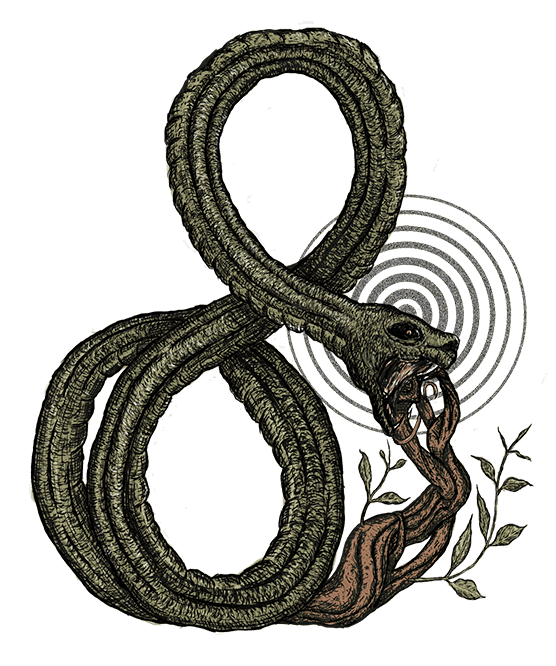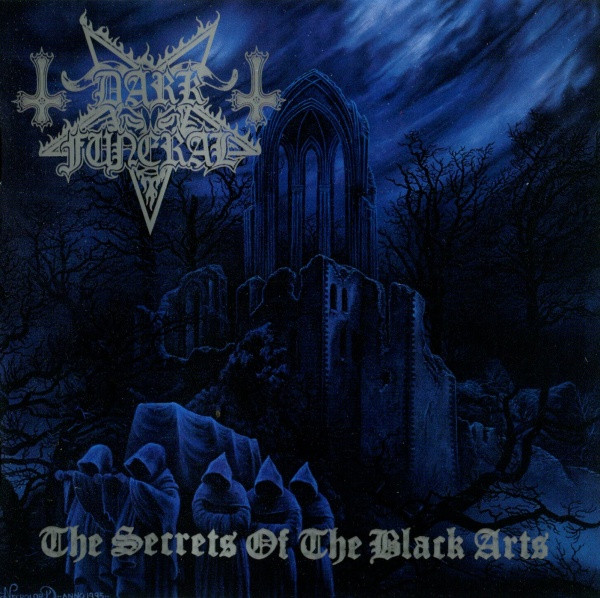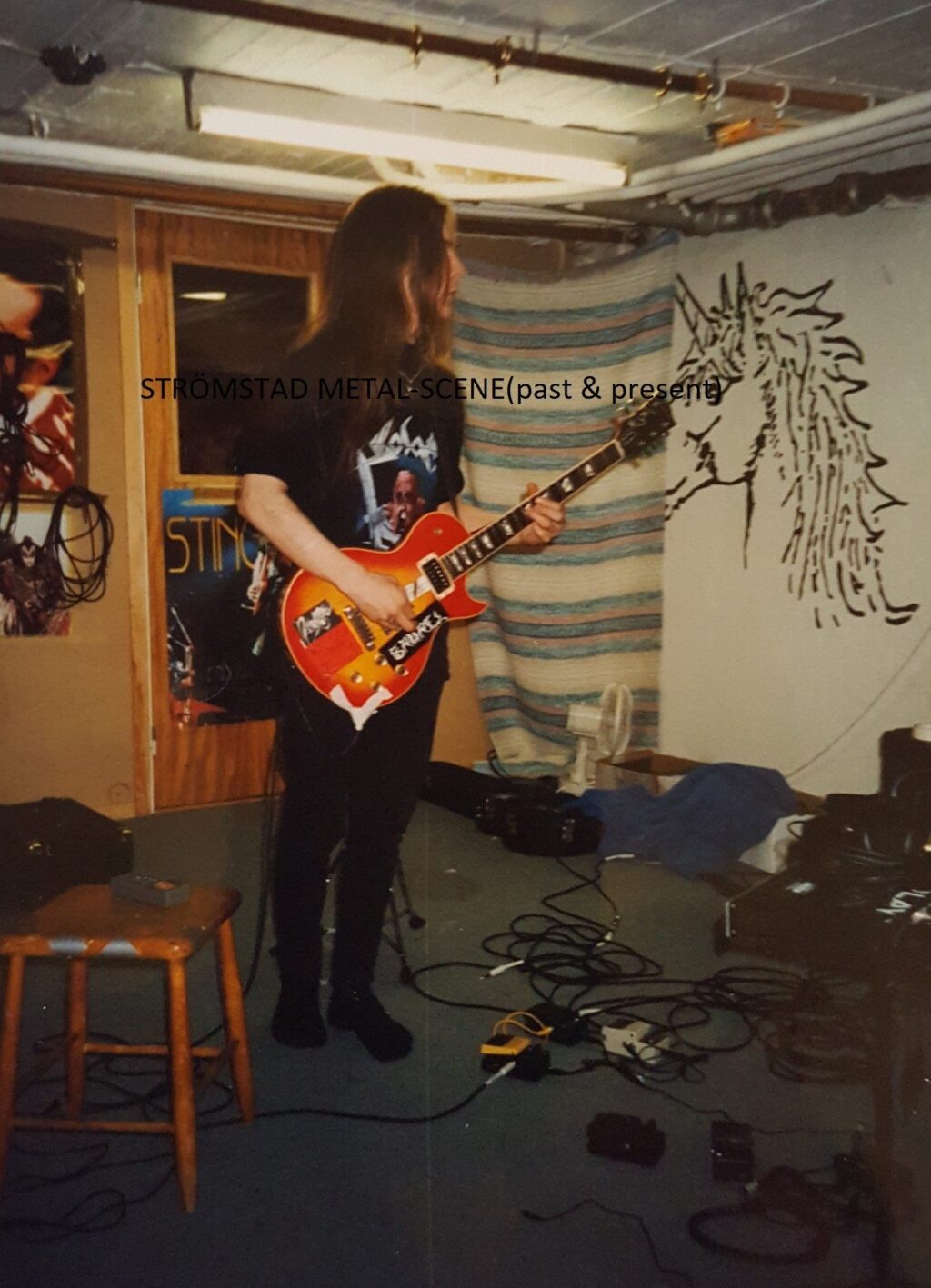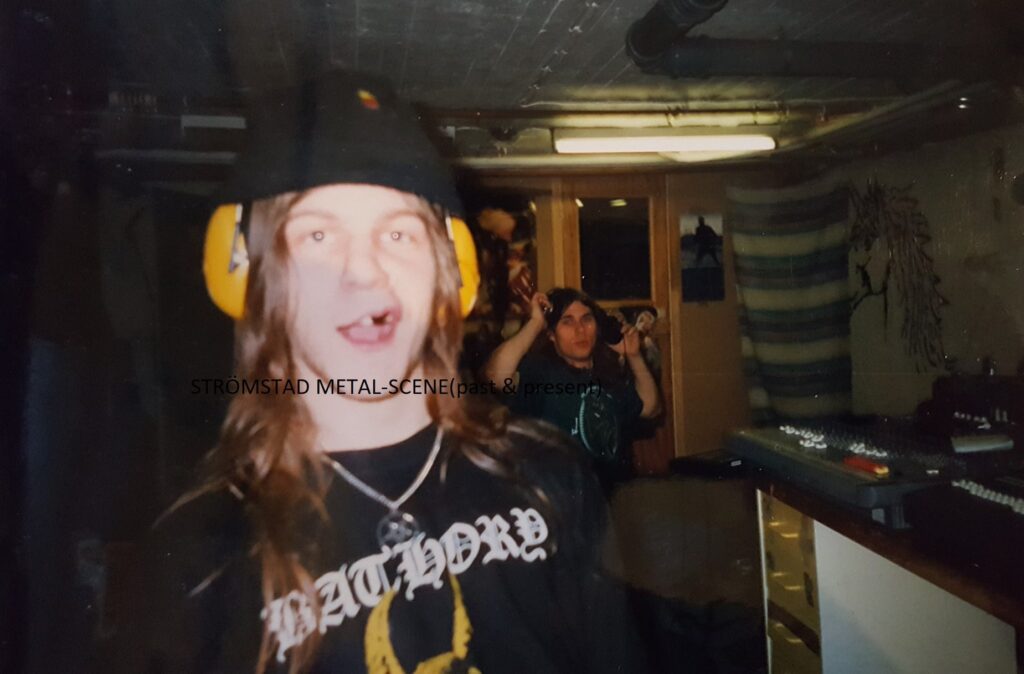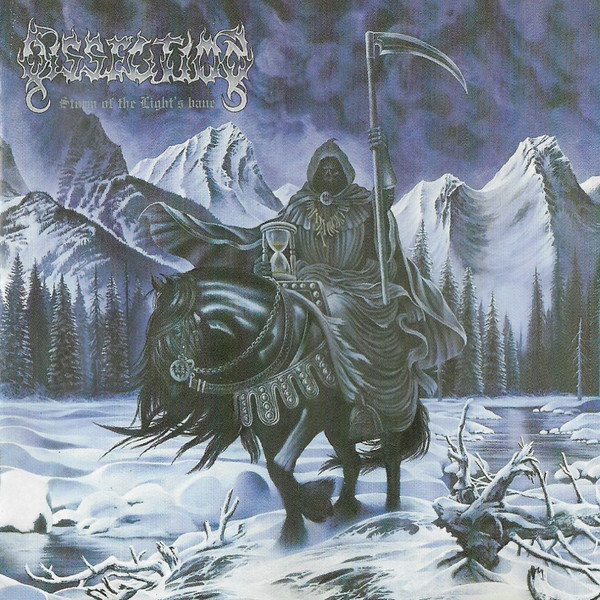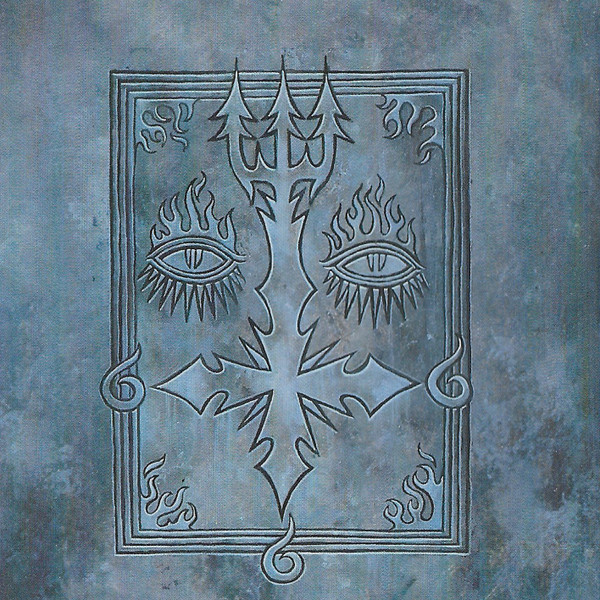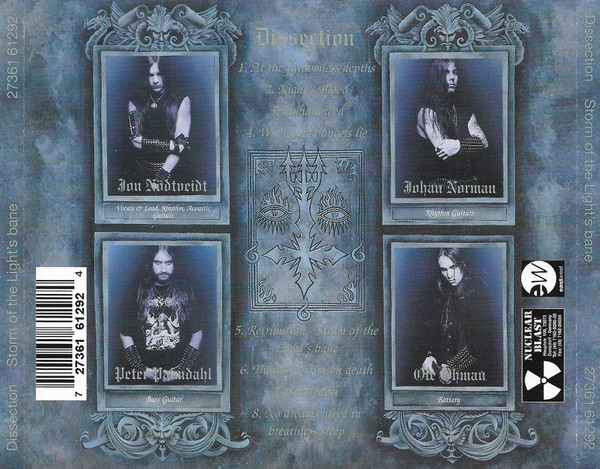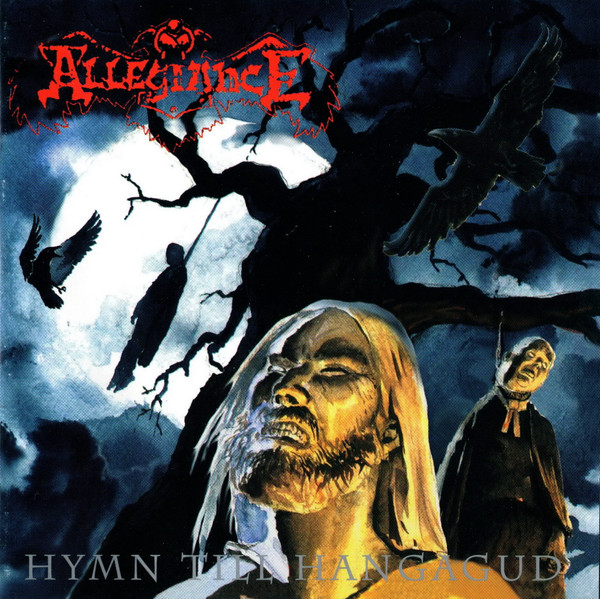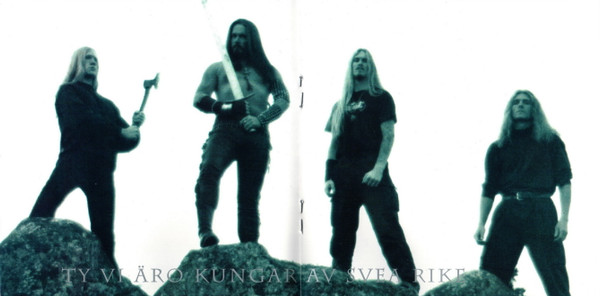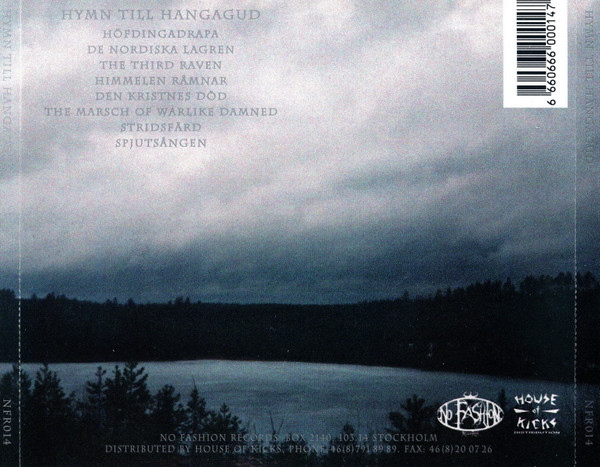Dan Swanö III
2024-01-17
by Niklas Göransson
The mid-90s heralded masterworks such as Storm of the Light’s Bane and Brave Murder Day. As the Dan Swanö trilogy comes to an end, we chronicle the twilight of Unisound Studio – a bastion of analogue purity, ultimately eclipsed by the digital dawn.
DAN SWANÖ: There are times when I still regret getting rid of the setup I had around “The Somberlain”, “Dance of December Souls”, and “Those of the Unlight”. It sounded great – yet for some reason, I bought a new mixing desk and exchanged my studio speakers. I always had this urge to constantly reinvent myself.
In December 1994, Dan replaced his tried-and-true analogue desk with a digital counterpart.
SWANÖ: But I must say… my old desk – with the bass and treble fully cranked up – was a big part of what Unisound became known for. Clear out all the fucking midrange, flood everything with reverb, and then hours of manual work on controls, potentiometers, and indicators.
The first recording Dan undertook with the updated studio was “The Breathing Shadow” – the debut album of his solo project NIGHTINGALE.
SWANÖ: It worked great for NIGHTINGALE – which used a drum machine, a synthesiser bass, and sometimes guitar and vocals playing by themselves. So, you’d have to be a complete imbecile to not get something listenable out of that. I still recorded on analogue reel-to-reel, but I’d become totally enamoured with digital mixing. ‘Now we have snapshots, we have Total Recall, and we have automation with faders moving up and down.’ All adjustments were made using a mouse or a shuttle wheel, with EQ curves shown on a screen before me.
As Dan was about to find out the proverbial hard way, recording NIGHTINGALE was an entirely different matter to black metal. In January 1995, DARK FUNERAL’s debut album, “The Secrets of the Black Arts”, became the first external project to make use of the new facilities. The Stockholm-based quartet had stirred up quite a bit of attention with their 1994 mini-CD and many over-the-top interviews.
SWANÖ: It was the first full production I did with acoustic drums, guitars, and bass using my new gear – and it didn’t turn out too well. It was shit, to be honest. My new speakers were crap, and I’d bought the wrong type of mixing desk for that music, quite simply. Nor had I taken enough time to learn it properly. Actually, it was almost destroyed the same day DARK FUNERAL turned up.
This incident was referenced by DARK FUNERAL members in fanzines following the studio visit. From memory, they took it as the first of several signs that their recording was cursed.
SWANÖ: Suddenly, filthy water came pouring down from the ceiling – barely a centimetre from the edge of my mixing desk. The situation felt so surreal that none of us even realised what was going on. Nothing of the kind had ever happened down there. As it turns out, the massage parlour upstairs had connected a dishwasher to a pipe that no one had ever used before. Clearly, it wasn’t sealed properly.
After an ominous start, the recording process soon went further downhill.
SWANÖ: I usually say that about ninety per cent of this debacle is on me. But you should ask the members if they really came fully prepared… I can’t imagine they’d say yes. I think DARK FUNERAL had fallen victim to the classic label pitch: ‘Alright boys, the EP has sold fucking great. We must strike while the iron is hot; get your asses into a studio before we lose the momentum.’
At the time, the mini-CD – which was recorded one year earlier, in January ’94 – had only been out for seven months.
SWANÖ: Most songs were still works in progress – they’d hoped to finish them up in the studio. Even if I’d given this material the best production imaginable, I’m not convinced that… I mean, you can check for yourself. There’s a re-release of the album with these tracks re-mixed by Daniel Bergstrand. I haven’t heard it, but my memory is that their playing wasn’t completely flawless.
A 2007 Regain Records re-issue of “The Secrets of the Black Arts” contains what’s labelled the ‘Unisound version’ as bonus material. It’s not exactly the tightest of recordings, no.
SWANÖ: I now realise that it was essentially a pre-production. Bands used to do this back in the 80s and early 90s. Still to this day, it’s a hugely important aspect of an album. You write the material, try it out on demos, and make a pre-production of the finished songs. ‘Is this any good? Is it a bit long? Too short?’ These things can be difficult to determine if you forgo this process and head straight into the studio . Nonetheless, all technical shortcomings are on me – I can admit that now.
I take it this was not always the case?
SWANÖ: No. I’ve stopped over the last fifteen or so years, but back then, I was always without blame. Whatever problems arose were always technical in nature. If a mix sounded strange when I listened at home, then I had to buy new speakers. ‘The fault must be with the equipment – because I am the best.’ It never occurred to me that everything worked fine; I just didn’t know what I was doing. Still, I have no doubt that this album being re-recorded helped DARK FUNERAL’s career. Had the original version been… say, thirty per cent better, then it might have ended up released – which would’ve had far less of an impact. It also gave them time to consider what could be improved upon.
Following the Unisound session, both the band and their label were dissatisfied with the result. Later the same year, DARK FUNERAL opted to re-record “The Secrets of the Black Arts” at The Abyss – a relatively new studio operation by HYPOCRISY’s Peter Tägtgren.
SWANÖ: Peter Tägtgren was, and probably still is, a master at producing this type of black metal. He created the entire Abyss sound with his innovative way of triggering drums. I’d never have thought of that. My drum setup was really… if the drummer hit hard, it sounded good. If he didn’t, then it was shit. Peter’s solution sounded pretty good even if the drummer lacked power – which this one did. So again, I apologise to DARK FUNERAL for experimenting at their expense. And that they had to spend six days in that studio without anything to show for it.
An infinitely more successful recording took place two months later, in March 1995, when DISSECTION returned to record “Storm of the Light’s Bane”.
SWANÖ: The boys had become closer to the image of them portrayed by the media; they gave a sterner and more sinister impression. I’d been stuck in my studio bubble – working day in, day out – so at first, it felt a bit strange that they were so different. I don’t know… it might’ve been a combination of them growing older and gaining more confidence. They’d also received some critique about certain aspects of “The Somberlain”. “Storm of the Light’s Bane” is, still to this day, the most hassle I’ve ever undergone with a studio recording. Just the fact that I had to mix it three times.
Was it common that you’d re-mix an album?
SWANÖ: No. Back in the demo days, I’d sometimes make improvements to the mix and then send it to the band. But I didn’t charge them for it, nor was I acting upon complaints about the first result. “Storm of the Light’s Bane” was a really trying process. Partly because the band members weren’t entirely certain what they wanted. There was no question what they sought to achieve in a musical sense, but sound-wise… Ole Öhman had this fixation that his drums should sound somewhere in between MAIDEN’s “Piece of Mind”, ÄNGLAGÅRD, and LANDBERK.
LANDBERK was an atmospheric and sombre-sounding Swedish prog band. Their 1992 debut, “Riktigt äkta”, became popular in black metal circles during the 90s. The closing track, “I nattens timma”, was a classic in the early morning hours. This song also made a mark on “Storm of the Light’s Bane” – compare it to the intro, “At the Fathomless Depths”.
SWANÖ: I told them, ‘Okay, but getting everything to work together in this context will be a nightmare.’ Listen to what is falsely labelled a ‘rough mix’: that’s the original version. It’s completely different from the third and final mix. The drums were mic’d up in a very 70s-like manner – and since they sounded small and clanky, the guitars had to follow suit.
A fat, heavy guitar tone would’ve made the snare and toms sound weak. Nor could there be much depth in the bass, as it would’ve robbed the kick drum of power.
SWANÖ: The first mix sounds pretty small. But personally, I think it’s cool; sort of reminiscent of the DARK FUNERAL EP. Shitloads of midrange and a not-so-scooped EQ curve on everything. Make of this what you will, but Nuclear Blast certainly didn’t like it. They wanted it re-mixed.
By the time of the re-mix, Dan was in the process of relocating Unisound from UNICORN’s old rehearsal place in Finspång to the nearby city of Örebro, where he occupied the top floor of a – believe it or not – tower clad in black metal.
SWANÖ: Jon came alone. I brought up the first song on the mixing desk, hit play, and began considering what kind of improvements could be made. As we listened, Jon went, ‘What the fuck? That’s not right.’ So, he grabbed his guitar and started re-recording parts. And then, ‘Those vocals are no good; can I re-do them?’ ‘Bloody hell, this was supposed to be a re-mix – we don’t have time to re-record everything!’ ‘Doesn’t matter, it sounds like shit and has been annoying me.’ We were in a hurry, so I didn’t bother arguing with him. I still remember setting up the microphone – the same one he’d sung through for “The Somberlain” – in the control room.
DISSECTION’s debut album, “The Somberlain”, was recorded on Dan’s old analogue desk in March 1993 – exactly two years before “Storm of the Light’s Bane”.
SWANÖ: As we were recording, I briefly removed my headphones for some reason and got to hear his voice coming from behind me – straight into my ears. It occurred to me what tremendous natural power that man had. Usually, the vocalist will be in a sound-proof booth, screaming into the microphone. And since the recording levels are consistent, I typically have no idea whether they are howling their lungs out or just talking in a scary voice. But what astonishing fucking power! Very impressive; Jon had such incredible natural fury in his vocals. It’s one of those goosebump-inducing memories I still carry with me.
They eventually wrapped up the second attempt, which can be heard in its entirety on the 2006 Black Horizon Music re-issue of “Storm of the Light’s Bane”.
SWANÖ: It was reminiscent of the first mix, perhaps a bit clearer. There was barely any reverb on the drums, I think. But Nuclear Blast didn’t like this version either, so they booked my studio for a third time. I believe Jon arrived with the other guitarist, Johan Norman, but I’m not sure. What I do remember is he’d also brought along that bass-playing twin from AT THE GATES, who was kind enough to inform me that my previous mixes sounded like shit.
Jon Nödtveidt and Jonas Björler – the bass player of AT THE GATES and THE HAUNTED – came from the same circle of West Coast metalheads. They previously had a short-lived project together called TERROR.
SWANÖ: We got started, and it wasn’t long before I realised that something was up. Apparently, DISSECTION had been told by their label that it should sound more like AT THE GATES. I’ve actually been reflecting on this; it’s not entirely clear to me whether Nuclear Blast had an advance copy of “Slaughter of the Soul” or if they were referring to the similarly produced “Terminal Spirit Disease”.
“Slaughter of the Soul” was recorded and mixed during the summer of 1995 in what at the time was a relatively obscure operation – Studio Fredman.
SWANÖ: Fredman wasn’t highly regarded back then: it was essentially just a demo studio, so I suppose Nuclear Blast compared his work to my mixes and thought, ‘Fuck, we must improve this.’ Now, the band demanded a more modern, clearer sound. I was utterly confused. ‘What the hell? You’re shifting from one extreme to the other. Initially, you wanted organic toms that resonate like an old prog record from 1972 – and now we have to gate them and add loads of reverb?’
A noise gate is an audio processing tool that mutes sound below a certain volume threshold, effectively silencing background noise like drum bleed or amplifier hum. This modern production technique contrasts with the more open, resonant sounds of earlier recordings, where all the nuances of the drum kit were captured, including ambient noise and softer hits.
SWANÖ: I didn’t think it would work. It’s like taking the raw audio of JUDAS PRIEST’s “Rocka Rolla” and attempting to morph it into DEF LEPPARD’s “Hysteria”. I mean, how? The original also had a fair amount of volume fluctuation in the drumming, along with edge hits and whatever else occurs when one plays acoustic drums. I found it rather charming, but Nuclear Blast did not. They wanted something more modern-sounding.
Dan used a triggered kick drum and then sampled a solid hit from the acoustic snare. In the final mix, all snares audible when there are no fill-ins are samples designed to resonate with consistent power each time.
SWANÖ: And this is how we achieved that ‘duka-duka-duka’ sound. I devised a system where I’d open both channels the toms were recorded on – with fixed panning and ample reverb – each time Ole played one of them. Using my trusty old Atari computer, I programmed exactly how long those channels should remain open before he began playing cymbals and snare. Otherwise, we’d have sound leakage, which would be disastrous. Just this relatively minor detail took several days with my first-generation digital mixing desk. But, in the end, it all came together and the drums started sounding as per the label’s request: more orderly and polished.
With the percussion more aligned with the 90s than the 70s, the other elements soon fell into place. The guitars now had a cold and chilling feel – the polar opposite of OPHTHALAMIA’s “Via Dolorosa”.
SWANÖ: At the time, it was only with great difficulty I could discern whether it sounded any good; I had a forty-degree fever throughout most of this process. My forehead was ablaze, and droplets of sweat kept coursing into the mixing desk. I felt dizzy and befuddled but had no choice but to push on. I listened at a very low volume – anything higher gave me a blistering headache.
After many days of gruelling, feverish work under extreme time pressure, they finished it at last. “Storm of the Light’s Bane” was then mastered by Håkan Åkesson at Cutting Room Studios in Stockholm.
SWANÖ: I can’t recall if it was a DAT tape or cassette copy, but I do know that when I placed it into Jon’s hand, he had about seven minutes to make it to the station and catch a train to Stockholm for the mastering. ‘Here’s the tape. Good luck, bye!’ And he bolted. The perfect way to conclude a mixing process! But that’s how it was: we managed to complete it in the last conceivable second. Then they mastered it and finally, everyone was satisfied. It was astonishing to witness the success of “Storm of the Light’s Bane”. I got shitloads of work based on that album. Numerous German bands began approaching me because of what I did with DISSECTION.
In July 1995, Swedish black metal band ALLEGIANCE – from which Morgan Håkansson had recruited three members to MARDUK – recorded their debut album, “Hymn till hangagud” at Unisound. I recall frontman B War mentioning in contemporary ‘zine interviews a rather dramatic interruption to the studio work.
SWANÖ: Indeed, that’s another classic. The summer of ‘95 was one of those meteorological marvels, with an oppressive heatwave. I even succumbed to sunstroke at one point as I – in my boundless wisdom – had positioned the mixing desk in front of a window on the top floor. Thus, the sun would be relentlessly shining in my face throughout the entire workday as it traversed from the left side to the right. I could never escape that accursed sun.
Regrettably, as B War would soon discover, Dan’s newly constructed vocal booth was entirely devoid of any form of ventilation.
SWANÖ: So, on the warmest day in living memory, on the top floor of a black metal tower, what he entered was essentially a padded sauna. After concluding that Bogge (B War) would probably die in there, we decided to record in the control room instead – with every window wide open. Bogge put on headphones, grabbed a vocal mic, and began screaming the Swedish lyrics; extremely loud, the kind of shrieks that come from a human desperately fighting for his life.
Then, suddenly, the doorbell downstairs rang. Since Dan was busy, he just let them in without checking.
SWANÖ: I assumed it was a band member who’d gone out to get something to eat or so. It took a while before the elevator arrived, and out of it storms… as far as I can remember, two cops and a dog. Weapons drawn, in full attack mode. I was shocked. I mean, what are the odds of this happening at your place of business?
The policemen led the canine through the studio, checking all rooms. Once the building had been secured, they confronted the suspects.
SWANÖ: One of them said, ‘We were told there’s a murder happening here.’ ‘Negative, there is a music recording happening here. You must have the wrong address, officer.’ ‘No, some lady across the street called it in.’ I looked out the window and realised that the tower was surrounded by residential buildings. I hadn’t been there very long and had focused more on the interior than my surroundings.
Many of the surrounding apartments’ windows were open. One of the tenants had heard someone screaming desperately, presumably about to die.
SWANÖ: ‘Ah, I see. My bad – we’re just recording some metal here.’ I rewound the tape and played Bogge’s vocals without any music. I can’t remember the exact wording now, but the lyrics were pretty full-on. The cop shook his head, ‘Alright. But make sure to close the fucking window next time.’ And then they left. We just looked at each other: ‘Did that really just happen?’
In the KATATONIA feature in Bardo Methodology #4, the band’s co-founder and guitarist, Anders Nyström, mentioned being struck by sudden inspiration at some point during the spring of 1996. He quit his job and booked studio time at Unisound for July – without the faintest idea of what he was going to record.
At that point, Nyström and drummer Jonas Renkse had drifted apart and not spoken for many months; consequently, KATATONIA was on hiatus. I came across a curious mention on the Unisound website: that the initial plan was for Anders and Dan to collaborate on some sort of ‘Chris Isaak metal’.
SWANÖ: Yeah, that’s what I thought until it was time to get started. We’d been chatting over the phone, and I had some kind of mental image of how incredibly killer it was going to be. I knew from our past collaborations that Anders and I appreciated the same kind of tonalities.
log in to keep reading
The second half of this article is reserved for subscribers of the Bardo Methodology online archive. To keep reading, sign up or log in below.
